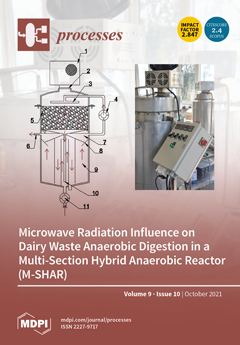CO
2 methanation is typically carried out using Ni-supported catalysts containing promoters such as alkali or alkali-earth metals to improve their properties. In this work, bimetallic Ni-based USY zeolite catalysts containing alkali (Li, K and Cs) and alkali-earth (Mg, Ca) metal compounds were
[...] Read more.
CO
2 methanation is typically carried out using Ni-supported catalysts containing promoters such as alkali or alkali-earth metals to improve their properties. In this work, bimetallic Ni-based USY zeolite catalysts containing alkali (Li, K and Cs) and alkali-earth (Mg, Ca) metal compounds were prepared using the same conditions (15 wt% of metals; co-impregnation), characterized by N
2 sorption, XRD, TGA, CO
2 adsorption–desorption, DRS UV-Vis and H
2-TPR, and finally applied in CO
2 methanation reaction (86,100 mL h
−1 g
−1, P
CO2 = 0.16 bar, H
2:CO
2 = 4:1). For each group, the effects of the second metal nature on the properties and performances were assessed. Alkali metals incorporation induced considerably low catalytic performances (CH
4 yields < 26%), attributed to their negative impact on zeolite structure preservation. On the contrary, alkali-earth metal-containing catalysts exhibited lower structural damage. However, the formation of Ni-Mg mixed oxides in Ni-Mg/USY catalyst and CaCO
3 during the reaction in Ni-Ca/USY sample could explain their performances, similar or lower than those obtained for Ni/USY catalyst. Among the studied metals, calcium was identified as the most interesting (CH
4 yield of 65% at 415 °C), which was ascribed to the slight improvement of the Ni
0 dispersion.
Full article





